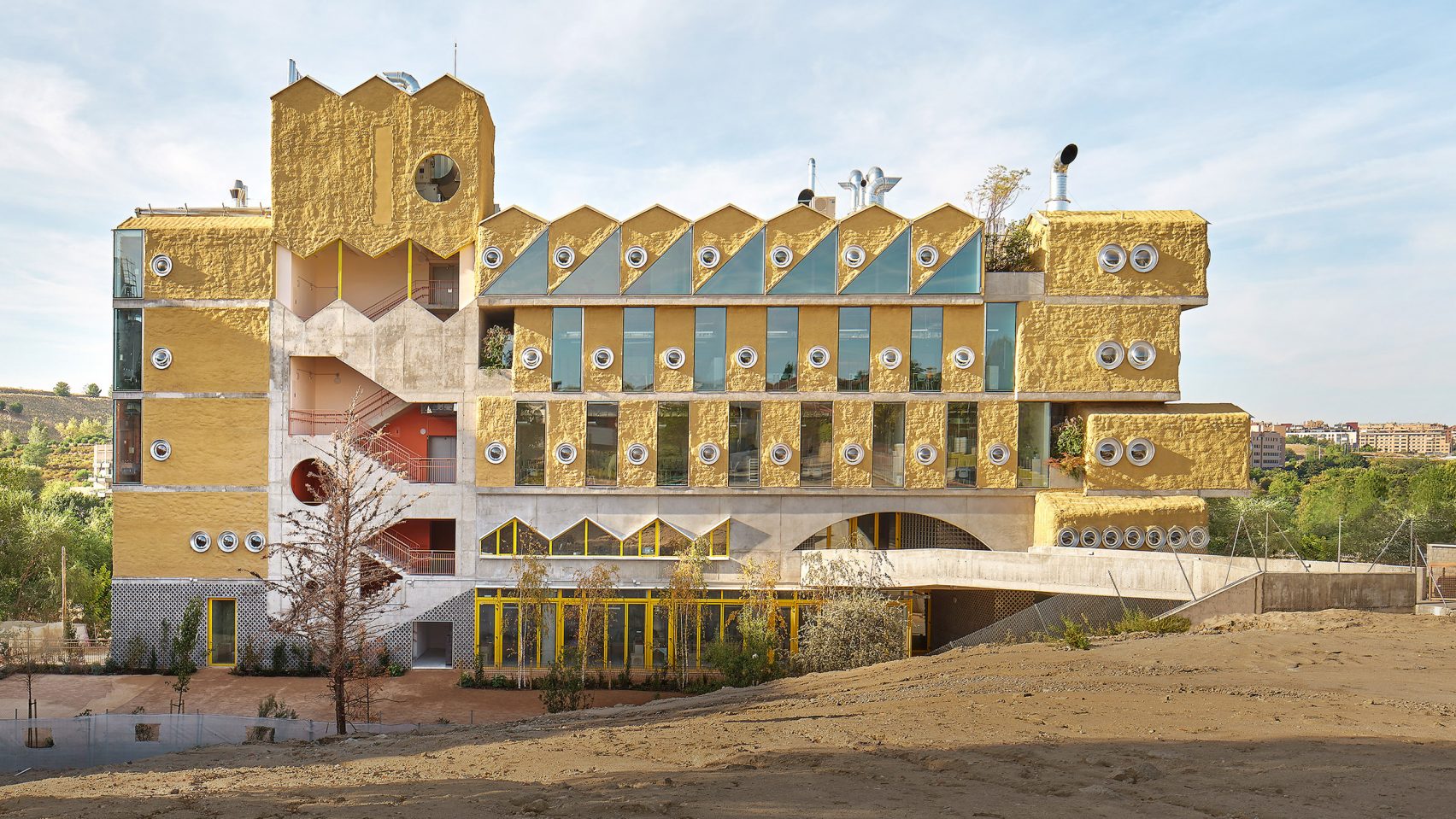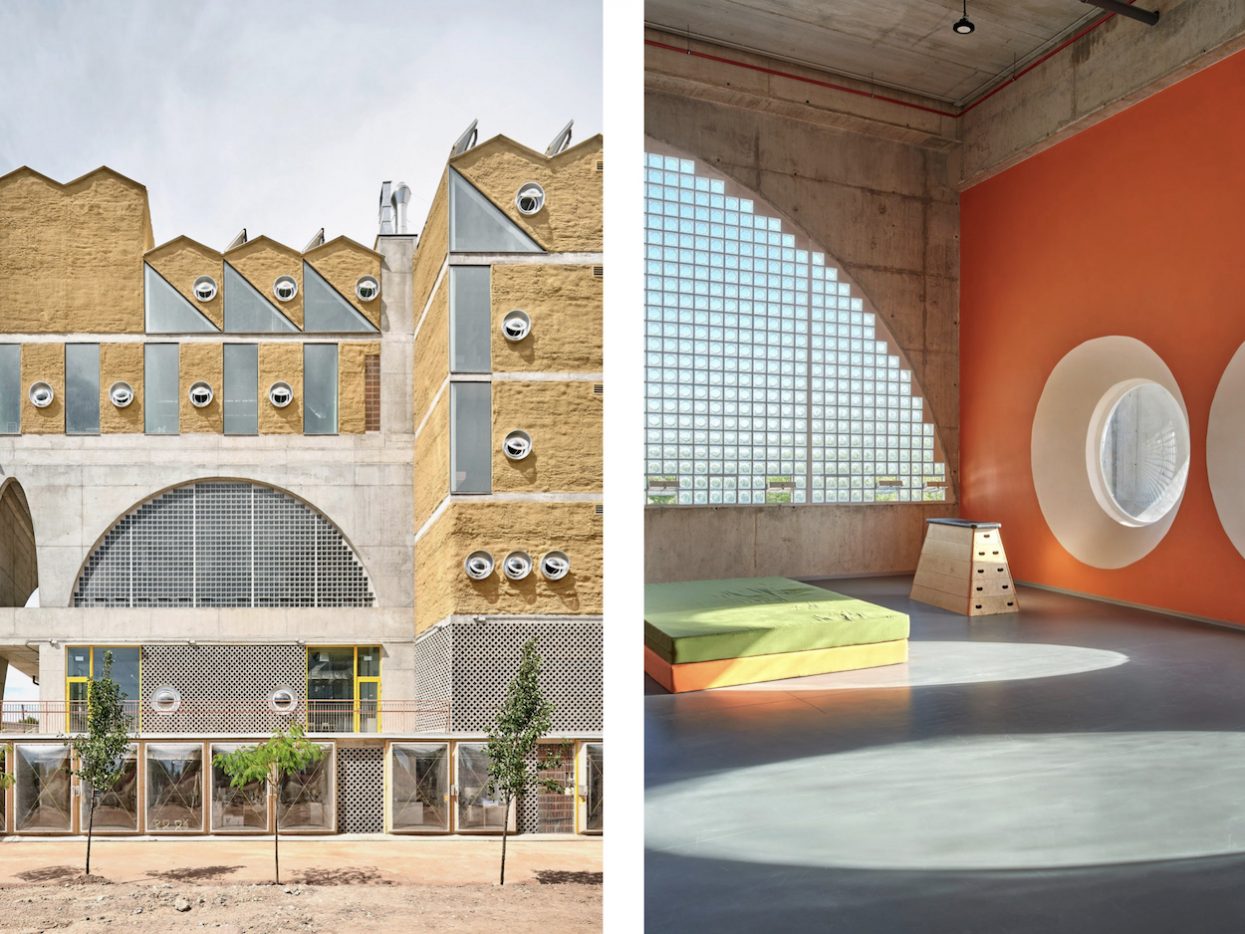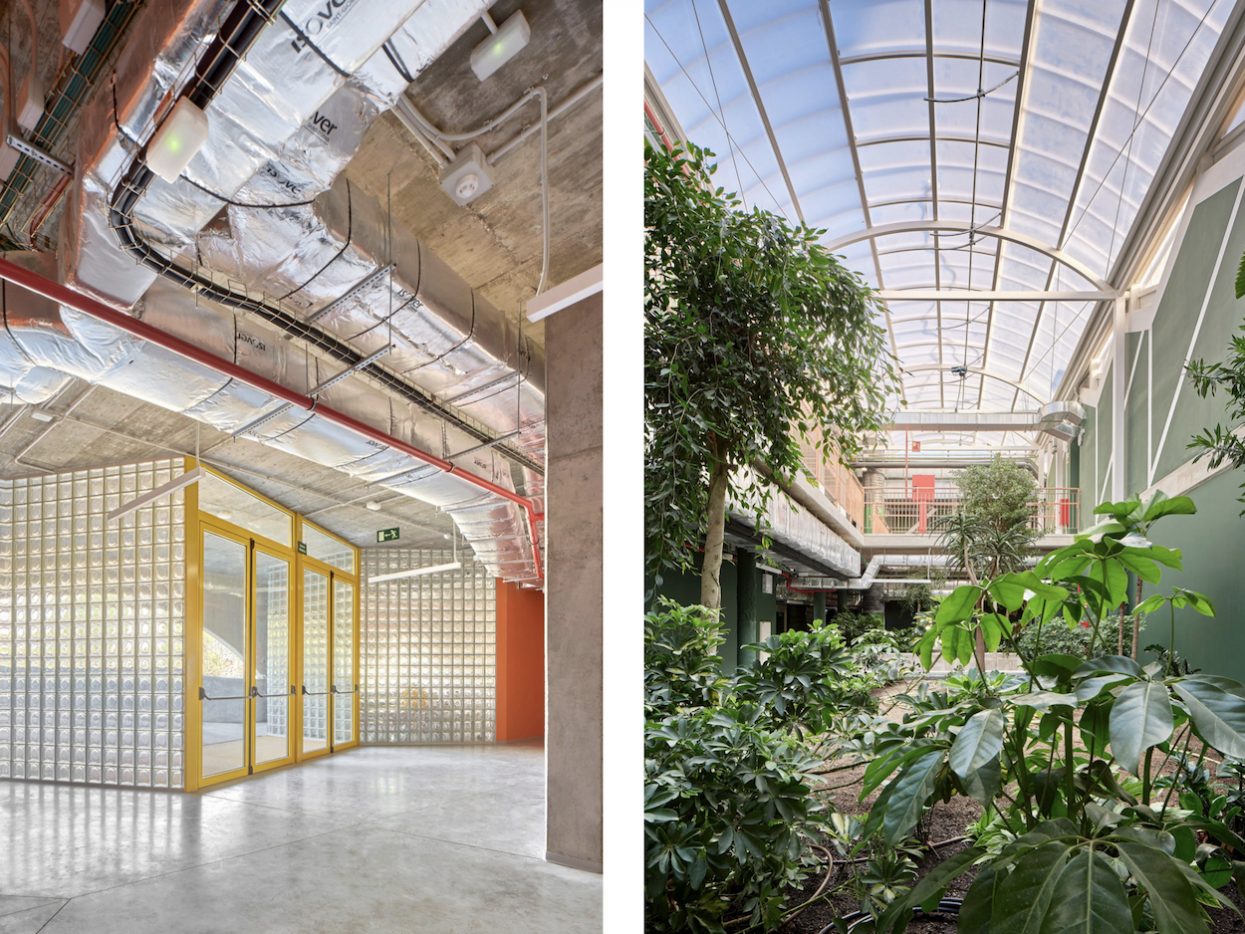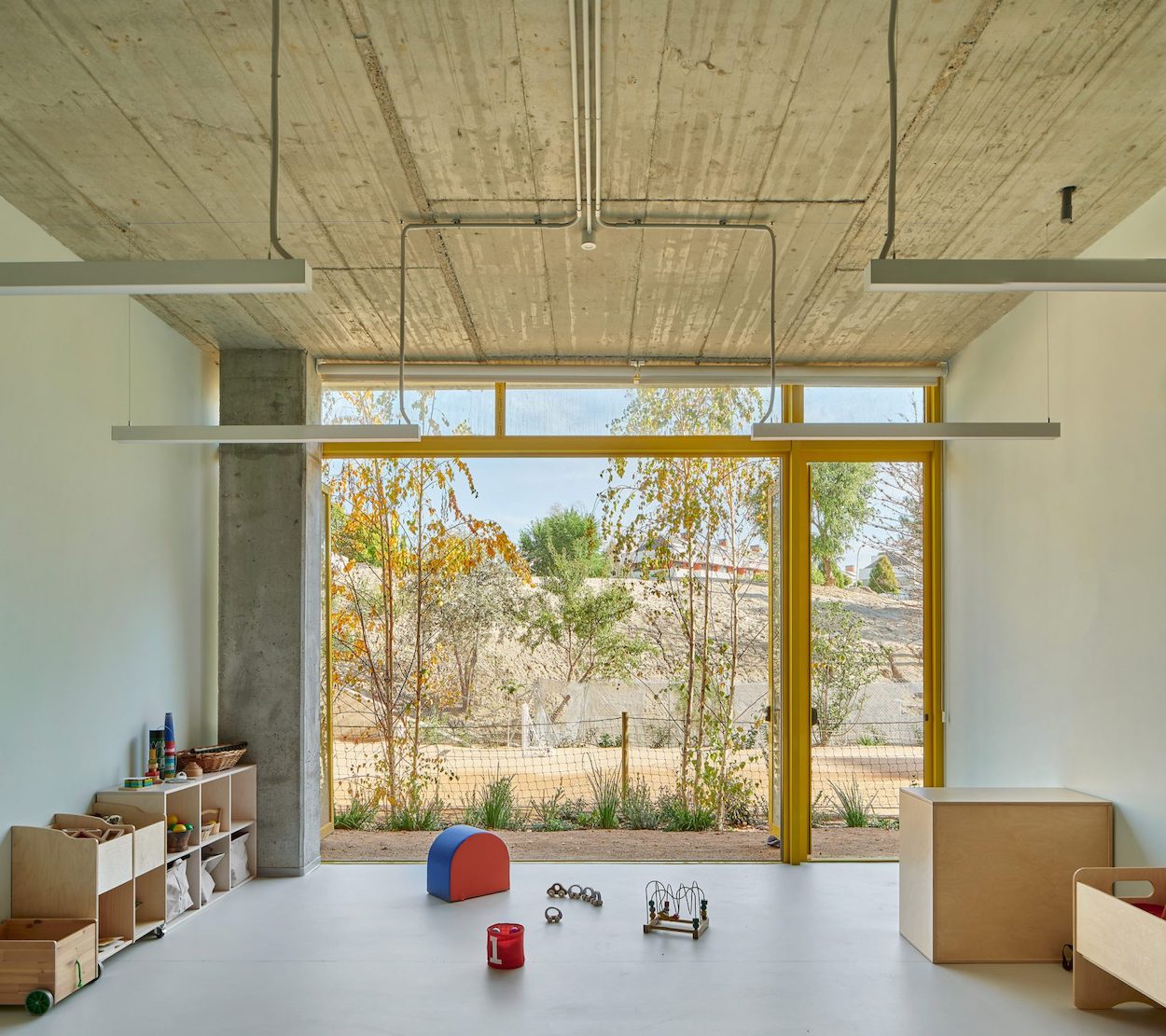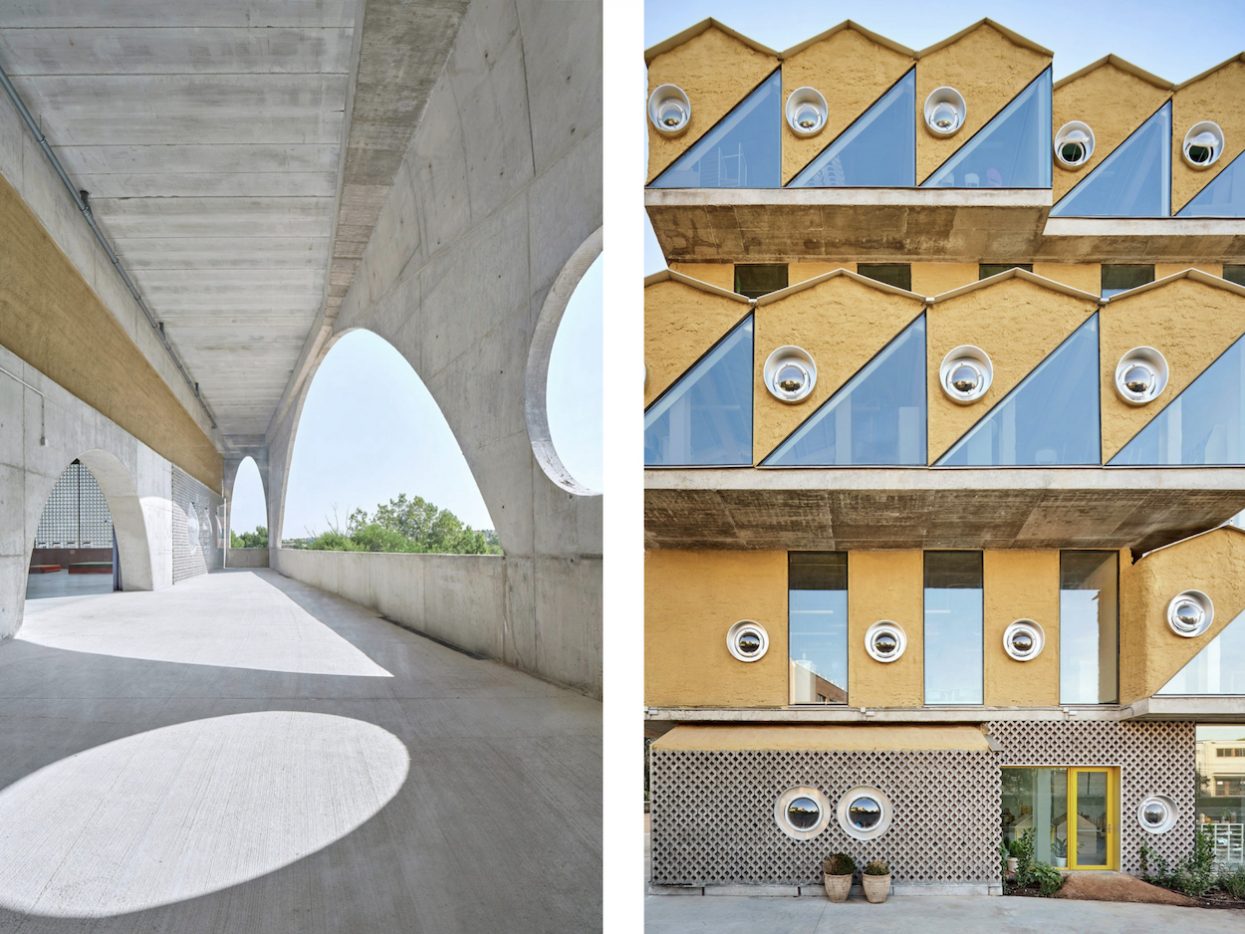Effective schools offer students a diversity of perspectives. And if you’re the latest Reggio School, an Italian education model pioneered in the 1940s by Loris Malaguzzi that fosters child-led forms of learning, students will also be exposed to a diversity of architectural styles. The six-story building, recently completed in Encinar de los Reyes on the northern outskirts of Madrid in a fanciful building by Office of Political Innovation, is a mélange of cork walls, concrete arches, porthole windows, and zigzagging roofs that together rivals a child’s imagination in boldness and whimsy.
Firm founder Andrés Jaque, who also serves as dean of Columbia University’s Graduate School of Architecture, envisioned the building as a “vertical city”—each level’s distinct style offers a different feel with the age of pupils increasing as one moves up. He likens it to an educational ecosystem that “avoids homogenization and unified standards,” he said in a statement. Speaking of ecosystem, classrooms and other teaching spaces neighbor a central atrium greenhouse and are interspersed among indoor gardens, which step up the building’s sustainability factor alongside reclaimed water tanks and cork insulation. “It operates as an assemblage of different climates, ecosystems, architectural traditions, and regulations.”
